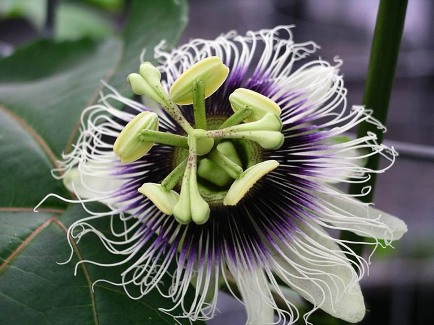BIO 203
Facts
Did you know?
Passion fruit is also known as parcha, granadilla, and maracuya. You might be wondering where passion fruit got its name. The fruit grows on the passion flower vine, which has a story behind its' name. In the 16th century, when Christian missionaries landed in South America, the passion flower was the
plant that signified their success. They believed that the flower symbolized the
death of Christ; the five petals represented the disciples (minus Peter and
Judas), the corona symbolizes the crown of horns around Christ's head, and other
features were a symbol of the wounds, nails, and whips used on Christ.
missionaries landed in South America, the passion flower was the
plant that signified their success. They believed that the flower symbolized the
death of Christ; the five petals represented the disciples (minus Peter and
Judas), the corona symbolizes the crown of horns around Christ's head, and other
features were a symbol of the wounds, nails, and whips used on Christ.
The purple passion fruit is said to have originated from Southern Brazil, Paraguay and northern Argentina. There are a few theories as to where the yellow passion fruit originated, although many speculate that it came from Australia after the seeds were introduced from Australia into Hawaii by E.N. Reasoner in 1923. Others believe that the yellow form was a mutant that occurred in Australia. In 1938, E.P. Killip described the fruit as occurring naturally with either purple or yellow fruits.
_svg.png)
What Can I Use Passion Fruit for?
The purple passion fruit, although generally a bit smaller than the yellow, is known to contain about 35% more juice than the yellow passion fruit, and is also richer in flavor. The pulp and seeds are very nutritious, and can be eaten directly from the fruit. They are often used in the process of making other foods and drinks, such as the candy-making process, ice cream, syrup, jelly, and some alcoholic beverages.

TONS of Nutrition
P. edulis has proven to be a good source of some important dietary components:
* excellent source of fiber!* antioxidants
* polyphenols, which are effective in preventing Cardiovascular Disease
*juice is high in ascorbic acid (vitamin C) and carotenoids (vitamin A)
Medicinal Uses
Some medical uses for the passion fruit include treating Osteoarthritis, hypertension, anxiety, and its usefulness as a sedative (Journal of Herbal Medicine and Toxicology).
If you want to see my References, click here. Or take a look at the Gallery of various photos of Passiflora edulis!